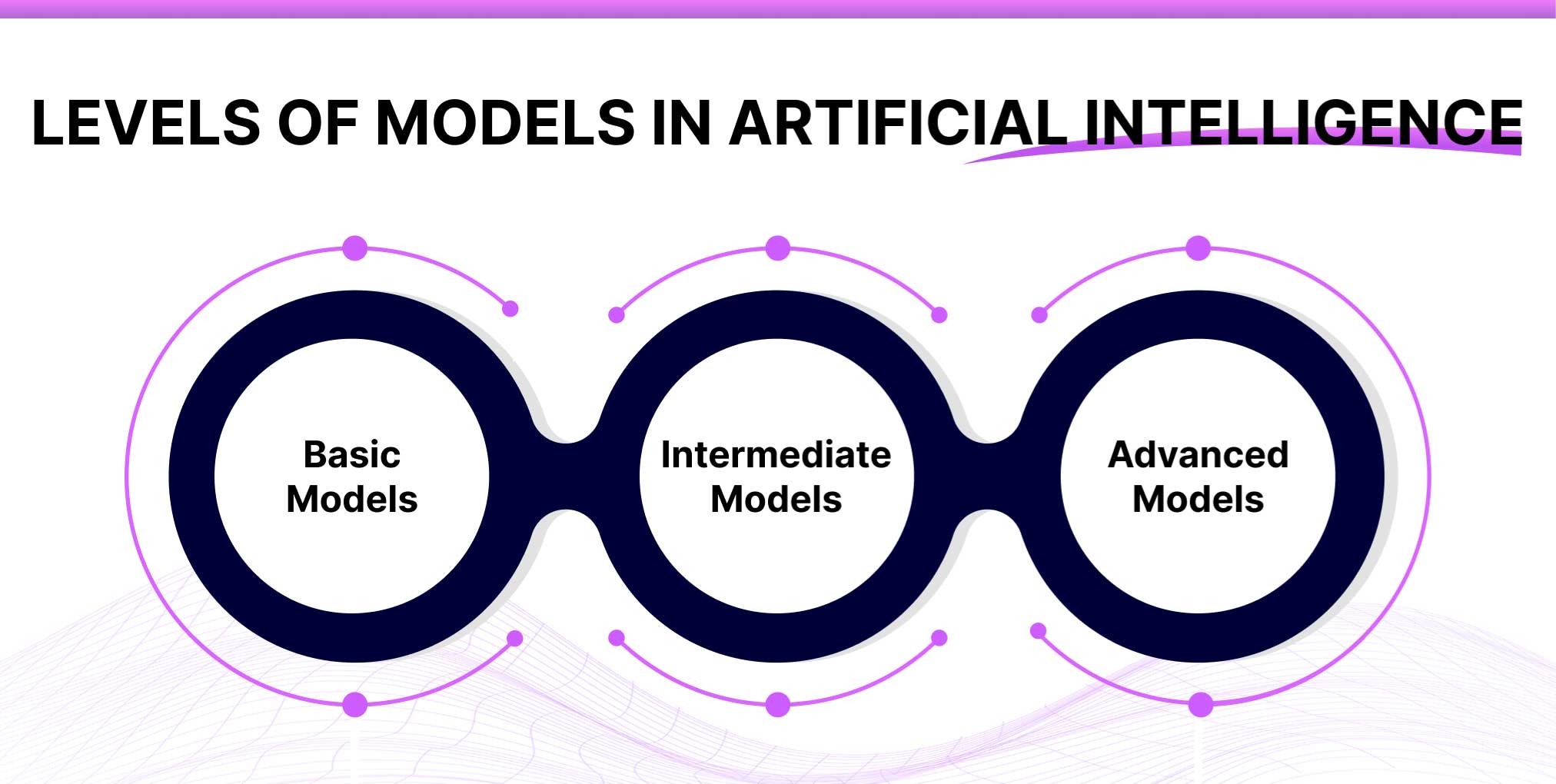

June 21, 2024
Artificial intelligence (AI) has become an important technology for businesses, researchers, and developers in today’s evolving tech landscape. The versatility and power of AI models enable them to tackle a broad spectrum of tasks, from natural language processing to image recognition. AI development services are critical in helping organizations implement and optimize these models effectively.
However, selecting the right one for your specific application can be challenging with multiple AI models available. This blog will guide you through the practical tips on how to choose the right AI model. We will also discuss insights about the different levels of models in artificial intelligence.

AI models are algorithms designed to perform tasks by learning from data. These models can range from simple linear regressions to complex neural networks, each suited to different problems and data structures.
These are the most basic AI models, including linear and logistic regression. They are useful for tasks where relationships between variables are linear.
These models are excellent for classification and regression tasks, offering high interpretability and robustness against overfitting.
SVMs are powerful for classification tasks, particularly when the data has a clear margin of separation.
These include various architectures like feedforward neural networks, convolutional neural networks (CNNs), and recurrent neural networks (RNNs). Neural networks are highly effective for image recognition, speech processing, and time-series forecasting tasks.
A subset of neural networks, deep learning models like CNNs and RNNs, can handle vast amounts of unstructured data. They excel in complex tasks but require significant computational resources.

Understanding the levels of models in artificial intelligence is important for narrowing down your choices. These levels indicate the complexity and capability of the AI models.
These include simple linear regressions and decision trees. They are suitable for primary tasks with clear patterns in the data. Basic models are easy to implement and interpret but may need more sophistication for more complex applications.
Intermediate models, such as random forests and SVMs, offer a balance between complexity and performance. They can handle more complex patterns in the data and are generally more robust than basic models.
Advanced models encompass deep learning architectures such as CNNs and RNNs. These models are highly complex and can perform intricate tasks with high accuracy. However, they require extensive data and computational power.
Choosing the right AI model involves a systematic approach, considering several factors that align with your application’s requirements and constraints. Here’s a step-by-step guide on how to choose the right AI model:
The first step in selecting an AI model is clearly defining the problem you’re trying to solve. Are you classifying images, predicting stock prices, or analyzing customer sentiment? The nature of your problem will significantly influence the choice of model.
Examine the type and amount of data you have. For instance, if you have a large dataset of labeled images, deep-learning models like CNNs may be appropriate. Conversely, simpler models like decision trees might be enough if your dataset is small and structured.
Refer back to the levels of models in artificial intelligence. A basic model may be the best choice if your task is relatively simple and your data is limited. For more complex tasks with more data, intermediate or advanced models might be necessary.
Utilize metrics such as accuracy, precision, recall, and F1 score to evaluate model performance. For instance, accuracy might be your primary concern if you’re working on a classification problem. On the other hand, precision and recall could be more important for an imbalanced dataset.
Advanced AI models, particularly deep learning models, require significant computational resources. Ensure you have the necessary equipment to train and use these models. If resources are limited, opt for models that are less demanding computationally.
In some applications, the interpretability of the model is influential. For example, it’s important to understand why a model made a specific prediction in healthcare. Simpler models like decision trees are more accessible to interpret than deep learning models.
Consider whether the model can scale with your application. If you anticipate needing to handle increasing data over time, choose a model that can scale efficiently.
Don’t hesitate to experiment with multiple models. The best way to determine the right AI model is often through practical experimentation and iterative testing. Use techniques such as cross-validation to rigorously assess model performance.
To illustrate the process, let’s consider a few practical examples:
You might start with basic models like logistic regression for a sentiment analysis task on social media posts. If these don’t perform well, you could try intermediate models like SVMs or advanced models like RNNs, depending on the volume and complexity of the text data.
Deep learning models such as CNNs are typically the go-to choice in an image classification project due to their superior performance with image data. However, transfer learning or simpler models like random forests could be effective for a smaller dataset.
Decision trees or random forests can provide a good balance of performance and interpretability for predictive maintenance in manufacturing, where sensor data is involved. Exploring advanced models like neural networks might be beneficial if the data is extensive and complex.
Like many others, if you’re lost in choosing an AI model, Xeven Solution AI Development Services can help. We guide you through every step, ensuring the best model selection for your needs. Partner with us to simplify your AI journey and achieve optimal results.
How to choose the right AI model for your application is a critical decision that can significantly impact the success of your project. You can make an informed choice by understanding the different levels of models in artificial intelligence and carefully considering factors such as the nature of your problem, data characteristics, and computational resources.
Remember, selecting the right AI model is often iterative and may require experimenting with multiple models to find the optimal solution. With thoughtful evaluation and testing, you can use AI models effectively to drive innovation and achieve your goals.